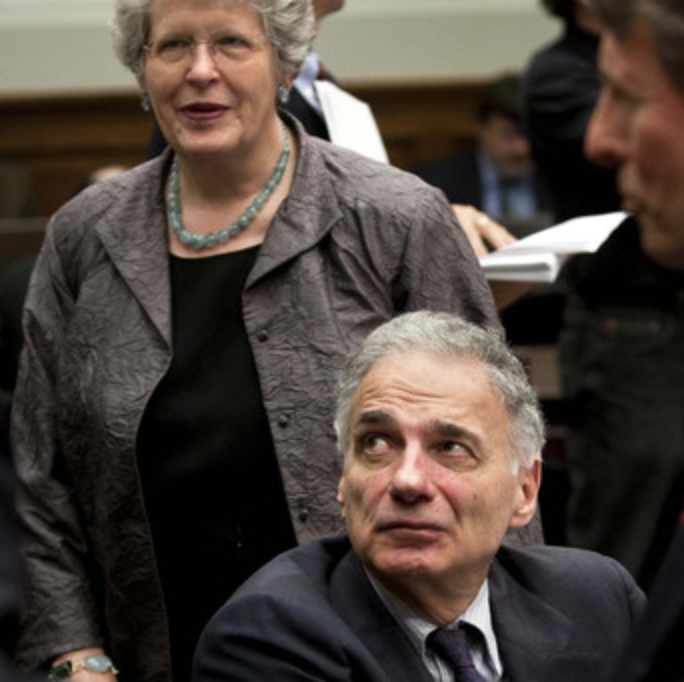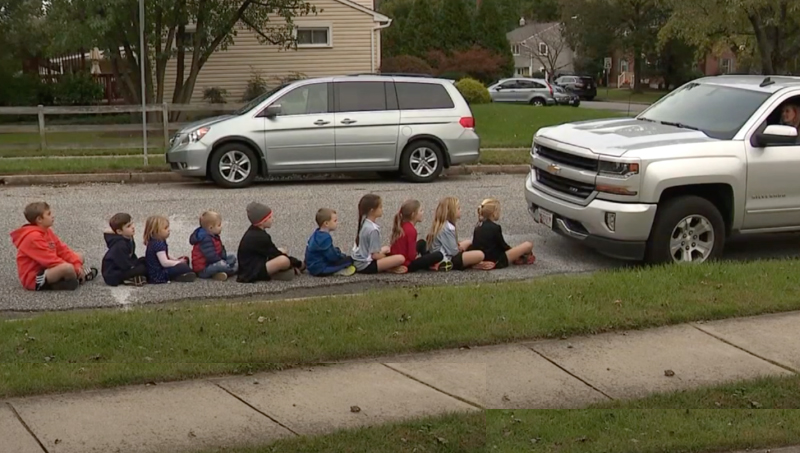Federal regulators have known about the inherent dangers that large vehicles pose to vulnerable road users since the mid-1970s, but have done almost nothing to stop it — and probably won’t until America fundamentally reorients the mission of its top safety agency to put transportation justice before consumer protection, a new legal research paper argues.
In a must-read paper forthcoming in the University of Pennsylvania Law Review, researcher John Saylor traces the history of how light trucks (an umbrella category which includes SUVs, pick-ups, and large vans) came to dominate American roads, and the role that the National Highway Traffic Safety Administration, Congress, and even some of the most well-loved heroes of the traffic safety movement have played in enabling it.
Today, megacars account for a staggering 75.9 percent of new car sales — a number that’s up from 53 percent just eight years ago, and that experts expect to grow, despite the fact that people on foot are up to three times more likely to be killed when struck by the drivers of such vehicles. The megacar boom is widely acknowledged to be a primary driver of the U.S. pedestrian death crisis, but it’s also killing other motorists: the drivers of smaller cars are 158 percent more likely to killed by pick-up truck drivers in the event of a collision, and 28 percent more likely if they’re struck by someone behind the wheel of an SUV.
And that death toll is not uniformly distributed. Because women, low-income people, and people of color are all less likely to buy big cars, they’re also disproportionately more likely to be killed by the driver of one, whether they're on foot or driving themselves.
Despite the mountain of evidence that today’s most popular cars are too dangerous for anyone outside the vehicle, the federal Department of Transportation has long been hesitant to regulate them — and in particular, to set limits on how tall, heavy, or aggressively designed the front end of a light truck can legally be. To date, only one federal motor vehicle safety has ever explicitly addressed how the safety of pedestrians, cyclists and wheelchair users is impacted by any vehicle design choices, and it was rescinded in 1994; the agency hasn't proposed another one in 40 years.
Here's why — and what to do about it.
Why NHTSA left pedestrians behind
It’s tempting to assume that the National Highway Traffic Safety Administration has been asleep at the wheel since the beginning of the light truck crisis, but Saylor says that’s not strictly true. Enhancing pedestrian safety overall was actually one of the primary catalysts for the National Motor Vehicle Safety Act, which helped create the Administration itself — and investigating the dangers of excessive vehicle height and weight was one of the first things the newly minted agency did.
By 1975, just five years after NHTSA was founded, regulators had released a report finding that “most significant [crash] injury-causing parameters" were "vehicle mass, vehicle height, and the ratio of vehicle height to pedestrian height.” The report was aimed at assessing the risks of the massive “grandpa-style Oldsmobiles” that gained popularity in the '70s, as Saylor puts it, but it would prove a prophetic warning as urban assault cars claimed a bigger share of the auto market, and particularly when the 1990 Ford Explorer sparked a national SUV boom.

“When I began this project, I expected that pedestrian safety was something that NHTSA had never thought about,” said Saylor. “It was really surprising to find out that, at four or five different points, they’d actually tried very hard to get something on pedestrian safety standards and crash compatibility standards, and it just fizzled out.”
When consumer protection trumps pedestrian protection
So how did NHTSA become an agency that does little more to protect pedestrians from an accelerating megacar crisis than banning hood ornaments and releasing the occasional victim-blaming educational campaign? Saylor argues that it starts with the consumer protectionist language baked into the 1966 Motor Vehicle Safety Act itself.
“Although the Motor Vehicle Safety Act provided for safety standards to ensure ‘the public is protected against unreasonable risk’ … it did require that any proposed standard be ‘appropriate for the particular type of motor vehicle … for which it is prescribed,’” Saylor writes. “Per the Senate report, this innocuous-seeming caveat was intended to ensure that rulemakers prioritized ‘affording consumers [a] wide range of choices’ in the market, soon interpreted to mean that the standards could not be used to ‘eliminate’ any particular type of vehicle, regardless of how dangerous it was.”
The decision to protect the consumer choice of people who buy cars instead of protecting the people those drivers might hit wasn’t an accident — but it wasn’t purely a product of automaker greed, either. Saylor points out that the activist most directly responsible for the Motor Vehicle Safety Act, Ralph Nader, is far better known as the godfather of the consumer protection movement. And when he brought the consumer protectionist lens to the language of the bill, he narrowed the scope of the public dialogue about the public health crisis of traffic violence on the whole — something Lyndon Johnson referred to as "the highway disease" when he approved the MVSA — to focus almost exclusively on holding automakers accountable for the safety and freedom of auto-buyers.

That shift, Saylor says, had deadly unintended consequences.
“I don’t want to knock Nader, because I don’t think we would have had very much auto safety policy without him,” Saylor says. “But if you read his book, Unsafe at Any Speed, the stories about pedestrian safety almost read like urban legends; like, a guy is riding his bike and he rear-ends a Cadillac with big tail fins and gets impaled. And when he does talk about more realistic scenarios, like a driver in a defective car losing control and plowing into a group of people on a sidewalk, the very next paragraph he’ll say, ‘That’s terrible, because the driver got arrested even though it was the car that was defective.’ You read that, and you’re like, ‘But wait a minute, what about all the people who got run over?’”
The consumer protectionist view of NHTSA’s role was even further solidified in 1972, when the Motor Vehicle Information and Savings Act began requiring the Administration to publish consumer education materials about the “crashworthiness” of cars sold in the U.S. — a term which the act defined as “the protection the vehicle affords its passengers,” excluding everyone outside the car.
How to de-megacar America
Regulating killer cars won’t be easy — and it isn't up to NHTSA alone.
Saylor is careful to point out that throughout its history, the top safety agency has faced intense pressure from Congress to allow motorists to purchase “exactly as much safety equipment as they want” and no more. Even innocuous-seeming safety laws — like requiring automakers to install equipment that prevents drivers from starting their cars before they’ve buckled their seatbelts — have been struck down by lawmakers in response to intense public pressure, and U.S. representatives aren’t likely to take a stand against their constituents’ favorite megacars anytime soon.
But Saylor says it’s not impossible to imagine a future where the Motor Vehicle Safety Act has been amended to center transportation justice over the consumer choices of people who buy cars — and where NHTSA has the authority and funding it needs to make that vision real.
And until activists achieve that future, leaving it up to the conscience of individual drivers won’t cut it.
“Everything that makes a light truck safer for its occupants is also what makes it more dangerous for other people,” Saylor said. “How are you going to create a safety rating that acknowledges that? When you ultimately put the decision about whether or not to buy a dangerous vehicle in the hands of someone who has every incentive to buy that car — especially when that person is more likely to be wealthy, white, and a man — that does not seem like a robust and equitable system. At a certain point, we need to actually be regulating these vehicles.”






